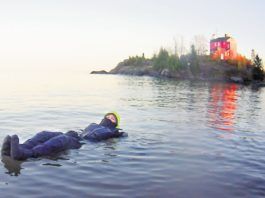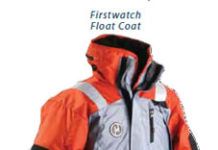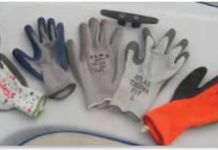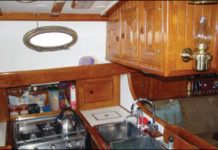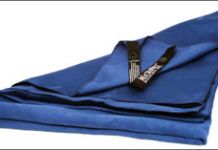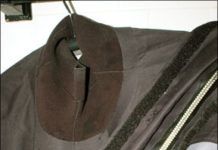PS Tests Firstwatch Float Coats
If the first rule of boating is to stay onboard, then the second must be to stay afloat in the event that rule number one is broken. There are several types of products that can help you keep from drowning in an MOB situation, but float coats also offer defense against hypothermia, a real danger in waters below about 70 degrees. Foam-filled float coats also double as foul-weather gear, so users are more likely to…
Chandlery: February 2012
Practical Sailor Chandlery: February 2012. This month reviews include: Sailor Gloves, Plumbers Putty, and more!
Mailport: March 2010
The March 2010 issue of Practical Sailor features letters from readers on such subjects as: household adhesives, Union 36s, foggy electronics, digital freezer controls and converting a boat from gas to electric.
Mens Foul-Weather Gear Update
Practical Sailor recently tested the first line of foul-weather gear released by Massachusetts-based Bluestorm. The three mens bibs-and-jacket sets are named appropriately for the general areas they are designed for use in: the lightweight Latitude 33, medium-weight Latitude 48, and heavy-duty Latitude 61. The sailing jackets and bibs were tested for wind- and water-resistance, fit and comfort, design, construction quality, warmth, design and fit of hood, design and construction of zippers, and reflectivity. Small, innovative details that Bluestorm incorporated into its foulies include the triple-closure system for jacket storm flaps and recessed Velcro fasteners. All sets have excellent hood design, and testers found the jackets to be supple, highly breathable, and comfortable, if a bit pricey.
Sea-Boot Camp Tests Footwear for Traction, Comfort, and Quality
As with most types of sailing gear, picking the right sea boot is dependant on the user and intended use. Caribbean cruisers have different needs than offshore voyagers sailing in the high latitudes. Practical Sailors tested the performance and comfort of 15 pairs of mid-calf, knee-high, and three-quarter sea boots from Aigle, Dubarry, Gill, Helly Hansen, Puma, Sperry, Ronstan, West Marine, and Musto. Although you don't necessarily need to spend several hundred dollars for decent boots, we did find that boots priced at $150 and higher fared much better in our tests.
Crossing Over
When it comes to gear for the outdoor enthusiast, there are a lot of crossover products. Hikers, bikers, boaters, backpackers, and climbers share a need for lightweight, durable, and practical equipment. So as Practical Sailor editors geared up for our summer adventures, we looked for products that could serve double-duty on the boat and on the trail.
Drysuits and Wetsuits for Sailors
Spring arrives in the minds of many sailors as soon as the ice has been carried out to sea. Its often the time when the breeze is consistent and only the temperature stands in the way of great sailing. Hypothermia is a concern, but the latest wetsuits, semi-drysuits, and full drysuits can add both comfort and safety to an early start. The new drysuit technology is a quantum leap forward in both comfort and thermal efficiency. Unlike a wetsuit, which traps and warms a thin layer of water next to the skin, the drysuit keeps all water out. The drysuit is not a survival suit. (See story, facing page.) It allows more freedom of movement. Its made of multiple thin layers, and in some cases, a breathable fabric. The drysuit allows the user to dress like a mountaineer, with wicking undergarments (Practical Sailor, January 2006) close to the skin, followed by layers of fleece, hollow fill, or other high-tech insulating layers. Hands are uncovered, but a wide range of glove options are available (see Practical Sailor, September and November 2008), allowing a sailor to keep warm and still maintain dexterity. Many drysuits incorporate sealed booties that accommodate sock-covered feet. Deck boots or other footwear can be worn over the sealed socks, insuring that the toes stay toasty warm. The semi-dry option is a high-tech wetsuit with some drysuit features. Neck and zipper seals and a unique top entry keep the chest and upper arm area of the neoprene suit dry. Legs and lower arms are warmed in wetsuit fashion by trapping a layer of water between the skin and the neoprene. Thicker material and high-tech insulation like Neil Prydes Zirconium yarn liner add warmth, and the combined effect delivers a suit thats both warm and flexible to wear. Wetsuits and semi-drysuits are often designated with numerals separated by a back slash. The first refers to the millimeter thickness of the torso portion of the suit and the second designation is the material thickness covering the extremities.

































